
Logan and Albert Conservation Association

On Sunday 29 November, the community forum will be held at the Forest Lake State High School, High Street, Forest Lake.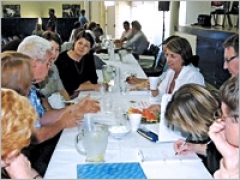
Everyone is welcome to attend.
The program includes informal and formal deputations, where individuals and organisations can discuss issues directly with Ministers, Parliamentary Secretaries and Directors-General. Deputations are limited to 15 minutes.
Sunday community forum program:
1-1.30pm Registration. Information and advice on government services available. Refreshments provided.
1.30- 2.30pm Community forum. Includes a question and answer session.
2.30-3.30pm Informal deputations. No booking is required.
3.30-5pm Formal deputations. A booking is required.
See the Pemier's website for more information http://www.thepremier.qld.gov.au/community/2009/forest_lake_ipswich.aspx
Unfortunately deputation request applications were due 12 noon Wednesday, 18 November 2009. However you lose nothing by trying.
Email This email address is being protected from spambots. You need JavaScript enabled to view it.
Environment, conservation, or environmental sustainability do not appear to have been discussed in past published documents - except for energy matters.
Member for Ipswich - Rachel Nolan MP and Minister for Transport should be present.
Although the very High conservation values are well known by authorities they are not officially recognised or acknowledged and recorded. The unique habitat zone called Bahrs Scrub covers suburbs / regions of Belivah, Bahrs Scrub, Windaroo, and Holmview. It is zoned under the current SEQ Regional Plan as a Major Development Area MDA for 11,000 dwellings - to match a density ratio per hectare nominated by state government.
Neighbouring areas have already been expanding under non-sustainable development practices with impacting infrastructure and mass clearing of forested areas. Koalas and platypus are know to live in the area as they are frequently seen. There is an existing Conservation Park which is very limited and threatened by urban encroachment as there are no buffers. Being home to rare, threatened, vulnerable, and endangered species of flora and fauna, including koala and platypus has not yet afforded the guarenteed protection one would expect in a contemporary society.
Newly discovered in 2008, unique flora species have recently been found to occur in this area and have Bahrs Scrub as part of their name.
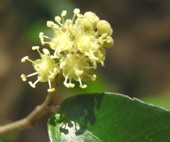
This position is one that concerned conservationists welcome.
An understanding and respect for the term ecologism is essential to progress survival of Australia's biodiversity.
Many of us practice shallow ecologism: that species have value only in relation to their benefit to human beings. Deep ecologism recogizes and accepts that species and landscapes have an intrinsic value and right to thriving existence.
Australia's National Biodiversity Strategy hovers between the two. However, we believe that overt commitment to deep ecologism required by all
Australians if biodiversity decline is to be reversed.
Australia's first national biodiversity strategy, the National Strategy for the Conservation of Australia's Biological Diversity, was prepared by the Australian and New Zealand Environment and Conservation Council (ANZECC) and endorsed by the Council of Australian Governments in 1996.
The strategy fulfills Australia's obligations under the International Convention on Biological Diversity.
A review of the National Biodiversity Strategy has been conducted by the Natural Resource Management Ministerial Council and a new strategy is expected to be endorsed in November 2009. You can follow the review and read submissions from this page.
Does legislation protect biodiversity?
Mostly no - legislation fails to ensure protection of unique biodiversity hotspots such as Bahrs Scrub!
The priority of current Environment and Urban Planning Laws is not to protect environment.
Priority is to mitigate species loss and/or to ensure environment does not interfere with project.
Such a perspective inevitably leads to habitat loss and therefore species loss.
Queensland is the last bastion of ‘injurious affection' ---old zonings cannot be changed without incurring massive compensation costs.
Judges, upon whose attitudes final decisions often hinge, do not have a deep ecologism perspective.
Unscrupulous developer practices and accidental catastrophes negate conservation concerns.
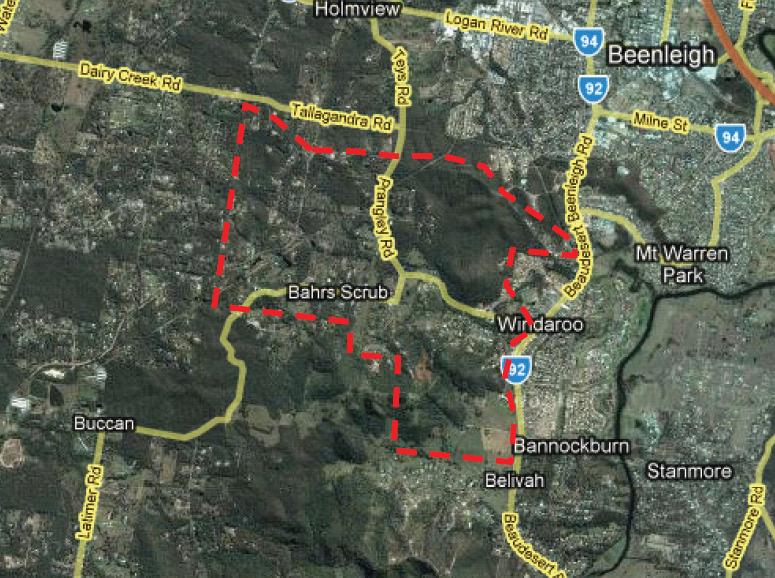 Can we save Bahrs Scrub?
Can we save Bahrs Scrub?
A presentation to Hon Peter Garrett, Minister for Environment, Heritage, and the Arts, with particular reference to the draft National Biodiversity Strategy was made by two of our Bahrs Scrub concerned citizens. The presentation was made by Petrina Maizey and Glen Leiper during the federal community cabinet meeting held at Beenleigh in the Forde electorate.
Bahrs Scrub has unfortunately been shuffled around and between local government areas. This happened when Logan was established as a new city and recently when our state government decided to amalgamate local councils. As a result of this Bahrs Scrub moved from the jurisdiction of the Albert Shire to become an outreach of Gold Coast Shire. Then as a reult of amalgamation this same area is an outreach of Logan City Council.
Bahrs Scrub has always been on the outskirts of the local authority boundary. Gecko - Gold Coast and Hinterland Environment Council has been actively engaged in monitoring and protecting this area and working with Gold Coast city council for many years. The area nows falls within the catchment of LACA - Logan and Albert Conservation Association as we endeavour to work with Logan City Council to achieve, we hope, best long term environmental outcomes.
Why the urgent need for this presentation and our 'campaign'?
Logan City has been targeted as an area for future development by state govenment's SEQRP or South East Queensland Regional Plan. People are rushing to SEQ and councils have been directed by state government to provide 'affordable housing' for these people. In Logan there are 8 such areas - all of which require Local Area Plans and innumerable manhours - funded by us to create our future.
This article makes use of the major points presented in the presentation - and will be followed by more. If you are interested in protecting the environmental values present in Bahrs Scrub Precinct and would like to be involved please contact us at bahrsscrub at laca.org.au or use the form on the contact page.
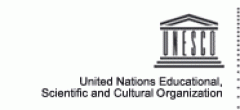 This week, the Noosa Biosphere is launching their new web site, described as an active place for community, special interests and visitors to connect with a broad range of biosphere reserve activity, with Michael Donovan, the Inaugural Chair of the Noosa Biosphere describing the web site as, "Punk in nature but logical in delivery and a striking example of creativity, commitment and practical outcomes from a locally based business".
This week, the Noosa Biosphere is launching their new web site, described as an active place for community, special interests and visitors to connect with a broad range of biosphere reserve activity, with Michael Donovan, the Inaugural Chair of the Noosa Biosphere describing the web site as, "Punk in nature but logical in delivery and a striking example of creativity, commitment and practical outcomes from a locally based business".
The Noosa Biosphere Reserve is also hosting a visit this week from Dr Natarajan Ishwaran, the UNESCO Secretary to the Man and the Biosphere Programme and Director of Earth Sciences, with over the two days of Dr Ish's visit, the hosting a Biosphere Q&A session and today the official launch of the Noosa Biosphere Reserve website www.noosabiosphere.org.au launch and a short film produced in Noosa.
Noosa, as Queensland's first UNESCO Biosphere is all about promoting harmony between people and nature through education, conservation and sustainable activities - all of which have a direct impact on the quality of Noosa as a tourism destination.
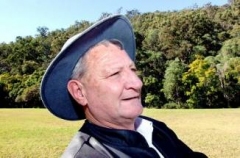 Environmentalists and concerned citizens are dismayed at lack of foresight by state government and local councils which blindly accept SEQRP urban footprint proposals.
Environmentalists and concerned citizens are dismayed at lack of foresight by state government and local councils which blindly accept SEQRP urban footprint proposals.
Ted Fensom, pictured aside, has been campaigning, and continues to campaign to assist local communities to protect what remains of open space, natural habitats and bioregional corridors, good quality agricultural lands, wetlands and riverine vegetation. Many of our rare and threatened fauna species depend of these patches of disconnected fragmented bushlands.
Glenn Leiper's presentation at the community meeting held at Windaroo Valley high school 5 November 2009 highlighted the rare and threatened and newly discovered plant species that are part of Bahrs Scrub biodiversity. Information about these rare flora will be added soon.
Albert and Logan news reported our concerns in July this year. Story is repeated here.
 All too often we citizens and businesses continue to follow patterns of behaviour or ways of doing things as we have done in the past. Stopping to reflect is not a regular occurence for most of us - ie until something makes us sit up and look at what has happened because of what we have been doing.
All too often we citizens and businesses continue to follow patterns of behaviour or ways of doing things as we have done in the past. Stopping to reflect is not a regular occurence for most of us - ie until something makes us sit up and look at what has happened because of what we have been doing.
Could our vast supplies of Australian coal be used other than for running power stations? The Science Show is reviewing the options and wants your input on the possibilities. If in 25 years we can no longer burn coal what do you think we could do with it? Have your say on the Science Show's message board.
The ABCs Science Show has a transcript and audio download of the program Alternative uses of coal. They are available here.
An extract follows
Guy Pearse: The main implication has been that coal has been seen to be too big to fail. So on the biggest environmental issue of our time and the biggest contributing factor (certainly in this country) to it, we've just assumed that clean coal will work because it has to work.
Peter Mares: That's the point, isn't it; coal is too big to fail.
Guy Pearse: We think. But it's not.
SLOW Food is an international not-for-profit organisation founded in 1986 to counteract fast food and fast life, the disappearance of local food traditions, people's dwindling interest in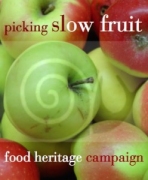 the food they eat, where it comes from, how it tastes and how our food choices affect the rest of the world - people, communities, animals, plants and the environment. There are branches in SEQ and locally at Mt Tamborine. Contacts for Queensland are available here.
the food they eat, where it comes from, how it tastes and how our food choices affect the rest of the world - people, communities, animals, plants and the environment. There are branches in SEQ and locally at Mt Tamborine. Contacts for Queensland are available here.
As the name suggests, Slow Food represents everything that fast food does not:
fresh, local, seasonal produce;
recipes handed down through generations;
sustainable farming practices (including organics);
small scale artisan food production; and
relaxed, leisurely dining in the company of family and friends.
Convivium (local Slow Food groups) activities introduce local foods and producers to both members and non-members, while Taste Workshops offer guided tastings with food experts. Find out more about the local Mt Tamborine group at their website linked here.
SLOW FRUIT is a current campaign to locate and capture images and information about sentinel fruit and nut trees and old orchards for Slow Food Australia's national Slow fruit register.
During the 1980s botanists ecologists and other environmental scientists discovered the beauty rarity and majesty of the Bahrs Scrub area - home to many unique rare or now endangered species - both flora and fauna. A proposal was made to the government of the day to declare it as a National Park. This unfortunately did not eventuate.
Those of us who value and respect landscapes with rare and endangered species will always look for lawful ways to protect preserve and enhance those species. As we work towards this end we will try to take the reader on a journey to discover the history of this special area of Bahrs Scrub and look to preserve it for posterity. Veresdale Scrub - a nearby now denuded dry vine rainforest - is almost extinguished by development encouraged by governments of the time.
Unless and until a ground truthing exercise to map all plants and animals and slopes has been conducted then it is irresponsible to plan for high density housing developments which could obliterate much of this biodiversity hotspot.
The Quest newspaper from Enoggera reports this week that almost one million hectares of Queensland has become nature refuge as more private property owners agree to set aside land for conservation. Environment Minister Kate Jones, also the State Member for Ashgrove, said 14 new conservation agreements had been signed with landholders this week, protecting an extra 172 thousand hectares across Queensland. The massive Toko Range, southwest of Mount Isa, is the largest among the latest nature refuges in the state.
Ms Jones says the new agreements bring the state's total land covered under the nature refuges program to more than 900 thousand hectares.
Wouldn't this be a great option for the current landowners of Bahrs Scrub? Better of course if the area became a National Park. However, landowners who join the nature refuge program are helped financially to maintain and enhance the landscape.
Major conservation councils, GECKO - Gold Coast & Hinterland Environment Council, and BREC - Brisbane Region Environment Council, and peak groups, Logan & Albert Conservation Association and Wildlife Logan have come together to promote responsible outcomes for Bahrs Scrub which preserve the area's unique, extremely high conservation values and acknowledge multiple development constraints.
In addition to multiple development constraints we are keen to work with Logan City Council landowners and developers to achieve an ecologically sustainable development for human settlement. As yet we have seen little on ground evidence that this concept is understood by those making decisions for us.
YOU CAN HELP US MAKE A DIFFERENCE TO THE WAY WE LIVE IN OUR COMMUNITIES.
Join one of the groups to learn more about sustainable developments.
Join one of the groups to help repair some unsustainable developments.